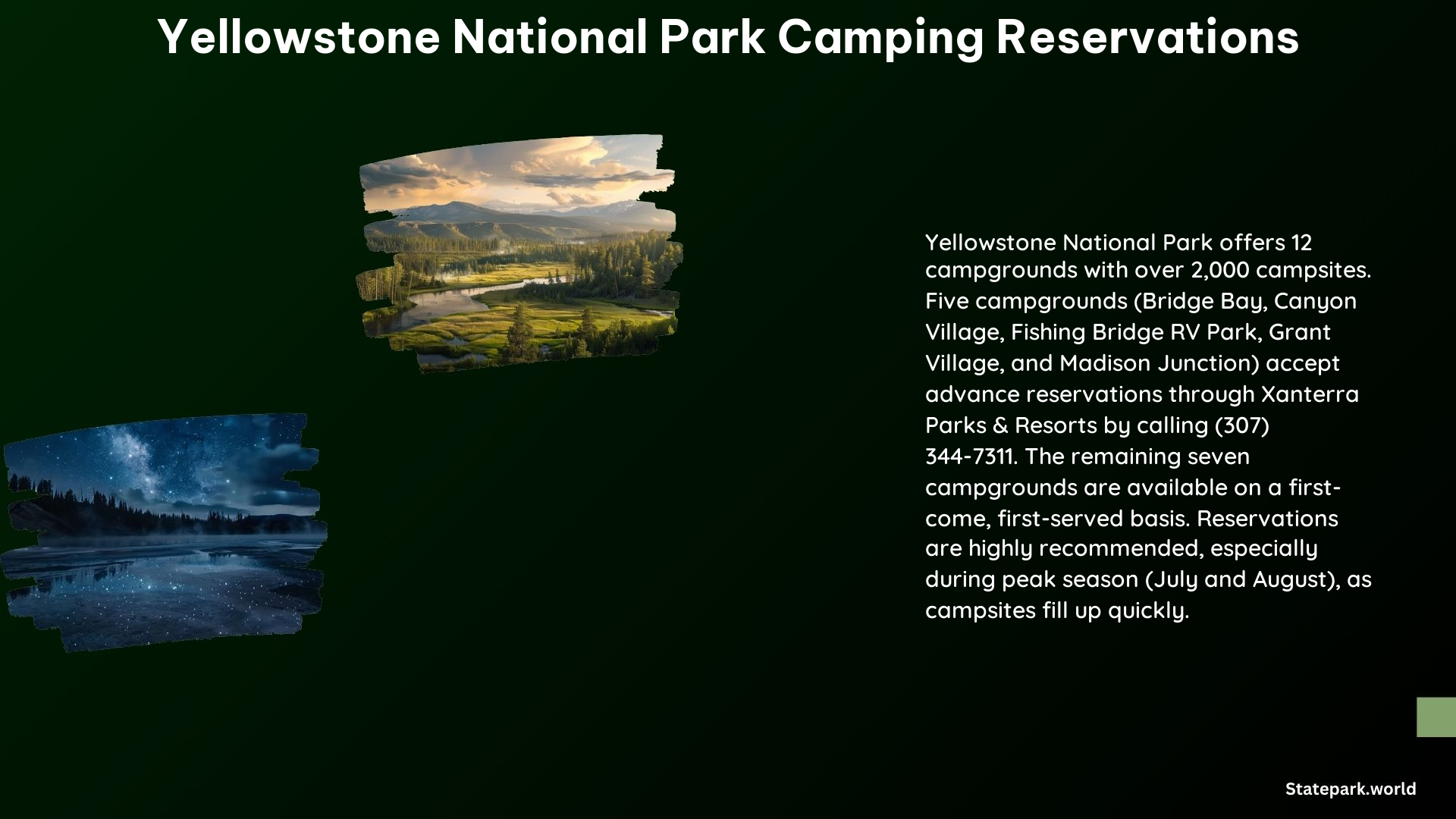Yellowstone National Park is a true gem of the United States, offering breathtaking landscapes, diverse wildlife, and a wealth of outdoor adventures. For those planning to camp in this iconic park, understanding the reservation process is crucial. In this comprehensive guide, we’ll dive into the details of Yellowstone National Park camping reservations, providing you with the information you need to plan your perfect getaway.
Reserving a Campground Site in Yellowstone National Park
Yellowstone National Park offers 12 campgrounds with over 2,000 established campsites. All campsites must be reserved in advance, with the exception of Mammoth Campground, which offers first-come, first-served sites from October 15 to April 1. Most campsites are reserved far in advance, so it is recommended to make reservations as early as possible.
National Park-Run Campgrounds
Reservations for the National Park-run campgrounds can be made on Recreation.gov exactly six months in advance. Some campgrounds have a few first-come, first-served sites and secondary release sites that can be booked two weeks in advance.
Yellowstone National Park Lodges Campgrounds
Reservations for the Yellowstone National Park Lodges campgrounds can be made on the Yellowstone National Park Lodges website. These campgrounds get fully booked for summer months in advance, so reservations should be made as early as possible, starting 13 months before the trip.
Campground Types in Yellowstone National Park

Yellowstone National Park offers a variety of campground options to suit different preferences and needs.
National Park-Run Campgrounds
The National Park-run campgrounds are more rustic, with no showers and some without flush toilets. Examples of these campgrounds include Indian Creek Campground, Lewis Lake Campground, and Mammoth Campground.
Yellowstone National Park Lodges Campgrounds
The Yellowstone National Park Lodges campgrounds are larger, with flush toilets, RV-friendly sites, and some have showers. Examples include Bridge Bay Campground, Canyon Campground, and Grant Village Campground.
Backcountry Campgrounds
Backcountry campgrounds in Yellowstone National Park are accessible only by walking, paddling, or horseback riding. These campgrounds are not accessible by vehicle.
Tips and Regulations for Camping in Yellowstone National Park
When planning your Yellowstone National Park camping trip, there are a few important tips and regulations to keep in mind.
Lifetime Passes
If you have a Lifetime Pass, you must be present with identification for entry into Yellowstone National Park. Lifetime passes admit the signer(s) and up to three additional adults when traveling by snowcoach or shuttle. Children under 16 are admitted for free.
Campground Closures
It’s essential to check for any temporary campground closures before planning your trip, as some campgrounds may be closed due to various reasons.
Conclusion
Yellowstone National Park is a true outdoor paradise, and camping is one of the best ways to immerse yourself in its natural beauty. By understanding the reservation process and campground options, you can ensure a seamless and enjoyable camping experience in this iconic national park. Remember to plan ahead, make your reservations early, and follow all regulations to make the most of your Yellowstone adventure.
References:
- https://www.nps.gov/yell/planyourvisit/campgrounds.htm
- https://www.nps.gov/yell/planyourvisit/permitsandreservations.htm
- https://www.recreation.gov/camping/gateways/2988
- https://www.yellowstonenationalparklodges.com/stay/camping/
- https://happiestoutdoors.ca/camping-in-yellowstone/
